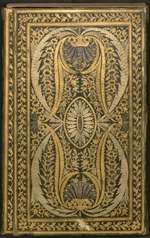Düzdidil Kadın
Düzdidil Kadın (Ottoman Turkish: دزددل قادین, from Persian دزد دل duzd-i dil meaning "thief of hearts"; c. 1825 – 18 August 1845) was the third wife of Sultan Abdulmejid I of the Ottoman Empire.
| Düzdidil Kadın | |||||
|---|---|---|---|---|---|
| Born | Ayşe Dişan c. 1825 North Caucasus | ||||
| Died | 18 August 1845 (aged 19–20) Constantinople, Ottoman Empire (present day Istanbul, Turkey) | ||||
| Burial | Imperial ladies Mausoleum, New Mosque, Istanbul | ||||
| Spouse | |||||
| Issue Among others | |||||
| |||||
| House | Dişan (by birth) Ottoman (by marriage) | ||||
| Father | Şıhım Dişan | ||||
| Mother | Princess Çaçba | ||||
| Religion | Sunni Islam | ||||
Early life
Düzdidil Kadın was born in 1825[1] in North Caucasus. Born as Ayşe Dişan, she was a member of Ubykh family, Dişan. Her father was Şıhım Bey Dişan and her mother was an Abkhazian princess belonging to Shervashidze.[2]
Upon Yahya Bey's decision, Ayşe had been brought to Istanbul as a young child, where she entrusted to the imperial harem, along with her nanny Cinan Hanım, and a maid Emine Hanım. Here her name according to the custom of the Ottoman court was changed to Düzdidil.[2]
Marriage
Düzdidil married Abdulmejid in 1839, and was given the title of "Third Consort".[3] On 31 May 1840, she gave birth to the Abdulmejid's first child and daughter, Mevhibe Sultan in the Old Çırağan Palace. The princess died on 9 February 1841.[4]
On 13 October 1841, she gave birth to twins, Neyyire Sultan[5] and Münire Sultan in the Old Beşiktaş Palace. The princesses died two years later on 18 December 1843.[6]
On 17 August 1843, she gave birth to her fourth child, Cemile Sultan in the Old Beylerbeyi Palace.[7] On 23 February 1845, she gave birth to her fifth child, Samiye Sultan[5] in the Topkapı Palace. The princess died two months later on 18 April 1845.[8]
Charles White, who visited Istanbul in 1843, wrote following about her:
The third...is cited as remarkable for her beauty, and not less so for her haughty and wayward disposition.[9]
Death

Düzdidil had fallen victim to the epidemic of tuberculosis then raging in Istanbul. A luxuriously decorated prayer book was commissioned around 1844 for her. As was fitting for her position, the prayer book was lavishly ornate.[10]
She died on 18 August 1845, and was buried in the mausoleum of the imperial ladies at the New Mosque Istanbul.[11][3][1] Cemile Sultan was only two years old when Düzdidil died. She was adopted by another of Sultan Abdulmejid's wives, Perestu Kadın,[5] who was also the adoptive mother one of her half brothers, Sultan Abdul Hamid II.[12]
After her death, her nanny, Cinan Hanım, went back to Caucasus,[13] while her maid, Emine Hanım, served in the imperial harem for sometime, after which she married and left the palace.[14]
Issue
Together with Abdulmejid, Düzdidil had five daughters:
- Mevhibe Sultan (Çırağan Palace, 31 May 1840 – Istanbul, 9 February 1841, buried in Tomb of Abdul Hamid I);
- Neyyire Sultan (Beşiktaş Palace – 13 October 1841 - Istanbul, 18 December 1843, buried in Nuruosmaniye Mosque);
- Münire Sultan (Beşiktaş Palace, 13 October 1841 – Istanbul, 18 December 1843, buried in Nuruosmaniye Mosque);
- Cemile Sultan (Beylerbeyi Palace, 17 August 1843 – Erenköy Palace, 26 February 1915, buried in Abdulmejid I Mausoleum, Fatih);
- Samiye Sultan (Topkapı Palace, 23 February 1845, – Istanbul, 18 April 1845, buried in New Mosque);
References
- Brookes 2010, p. 280.
- Açba 2007, p. 51.
- Uluçay 2011, p. 206.
- Uluçay 2011, p. 217.
- Sakaoğlu 2008, p. 599.
- Uluçay 2011, p. 220, 225.
- Uluçay 2011, p. 221.
- Uluçay 2011, p. 225.
- Charles White (1846). Three years in Constantinople; or, Domestic manners of the Turks in 1844. London, H. Colburn. p. 10.
- Rebhan, Helga (2010). Die Wunder der Schöpfung: Handschriften der Bayerischen Staatsbibliothek aus dem islamischen Kulturkreis. Otto Harrassowitz Verlag. p. 79. ISBN 978-3-880-08005-8.
- Açba 2007, p. 52.
- Brookes 2010, p. 279.
- Açba 2007, p. 52 n. 23.
- Açba 2007, p. 51 n. 22.
Sources
- Uluçay, M. Çağatay (2011). Padişahların kadınları ve kızları. Ötüken. ISBN 978-9-754-37840-5.
- Açba, Harun (2007). Kadın efendiler: 1839-1924. Profil. ISBN 978-9-759-96109-1.
- Sakaoğlu, Necdet (2008). Bu Mülkün Kadın Sultanları: Vâlide Sultanlar, Hâtunlar, Hasekiler, Kandınefendiler, Sultanefendiler. Oğlak Yayıncılık. ISBN 978-6-051-71079-2.
- The Concubine, the Princess, and the Teacher: Voices from the Ottoman Harem. University of Texas Press. 2010. ISBN 978-0-292-78335-5.
